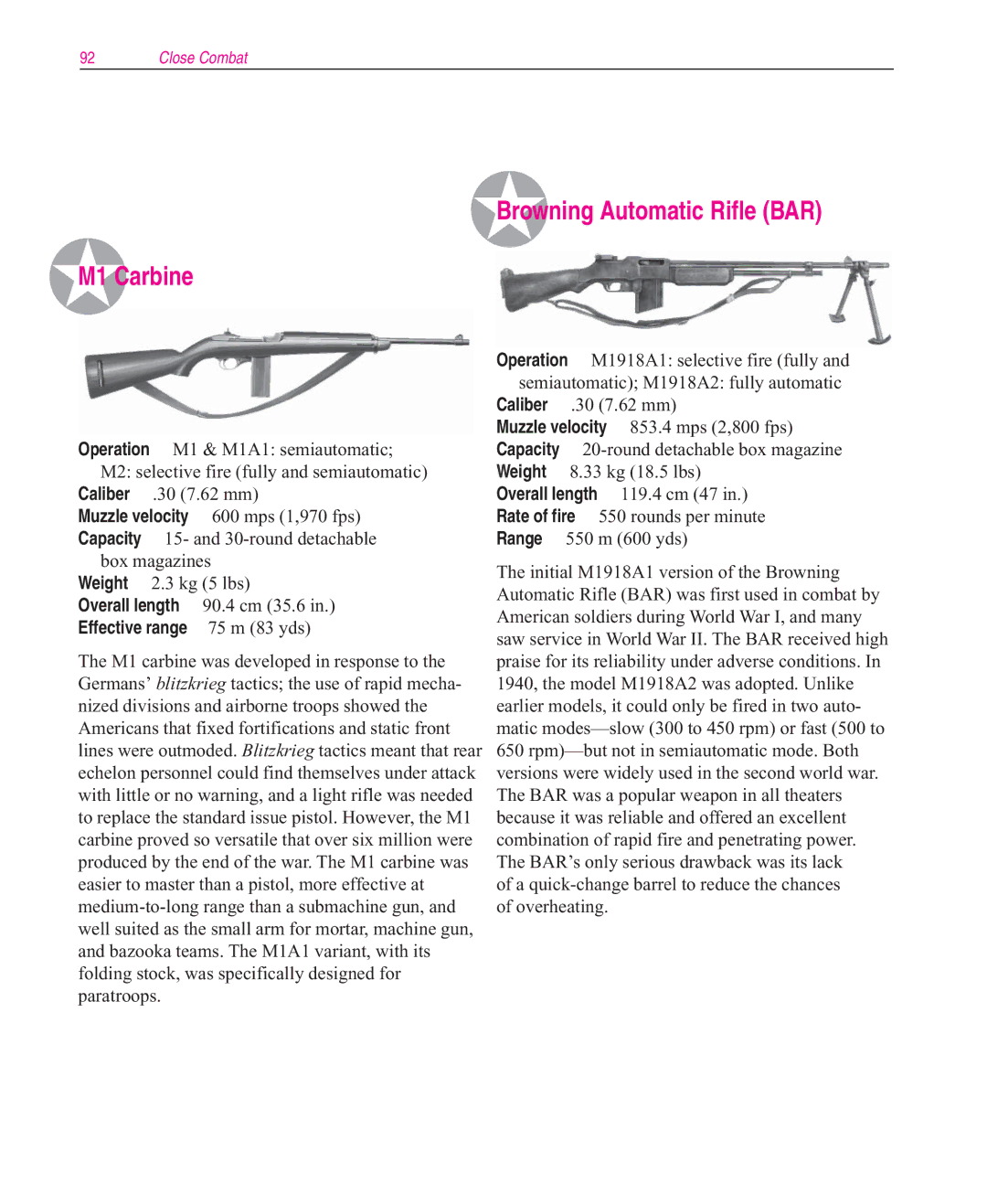
92Close Combat
Browning Automatic Rifle (BAR)
M1 Carbine
Operation M1 & M1A1: semiautomatic; M2: selective fire (fully and semiautomatic)
Caliber .30 (7.62 mm)
Muzzle velocity 600 mps (1,970 fps) Capacity 15- and
box magazines Weight 2.3 kg (5 lbs)
Overall length 90.4 cm (35.6 in.)
Effective range 75 m (83 yds)
The M1 carbine was developed in response to the Germans’ blitzkrieg tactics; the use of rapid mecha- nized divisions and airborne troops showed the Americans that fixed fortifications and static front lines were outmoded. Blitzkrieg tactics meant that rear echelon personnel could find themselves under attack with little or no warning, and a light rifle was needed to replace the standard issue pistol. However, the M1 carbine proved so versatile that over six million were produced by the end of the war. The M1 carbine was easier to master than a pistol, more effective at
Operation M1918A1: selective fire (fully and semiautomatic); M1918A2: fully automatic
Caliber .30 (7.62 mm)
Muzzle velocity 853.4 mps (2,800 fps) Capacity
Overall length 119.4 cm (47 in.) Rate of fire 550 rounds per minute Range 550 m (600 yds)
The initial M1918A1 version of the Browning Automatic Rifle (BAR) was first used in combat by American soldiers during World War I, and many saw service in World War II. The BAR received high praise for its reliability under adverse conditions. In 1940, the model M1918A2 was adopted. Unlike earlier models, it could only be fired in two auto- matic
of a
